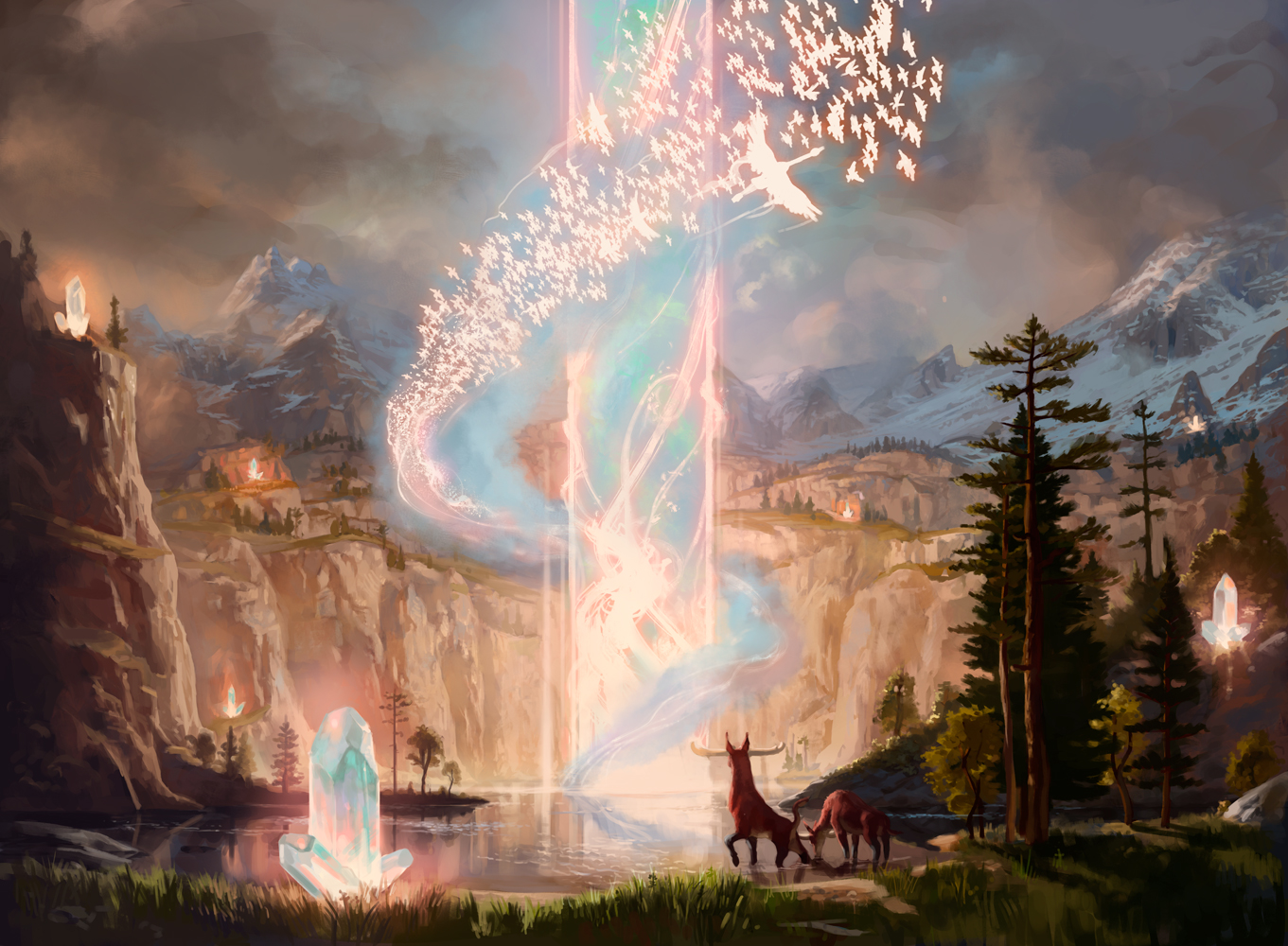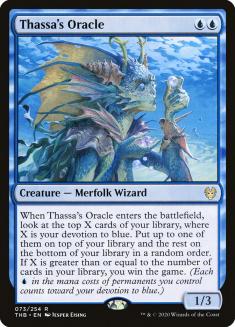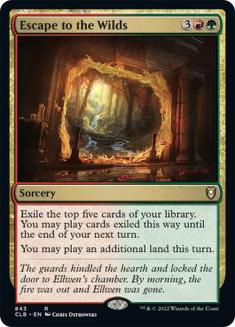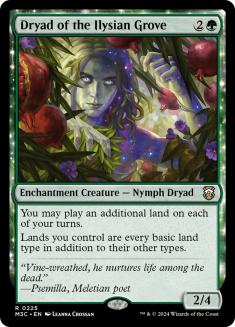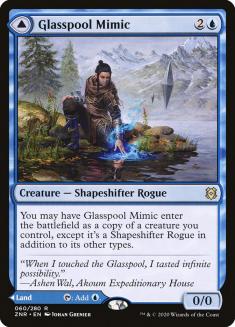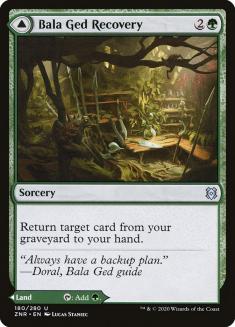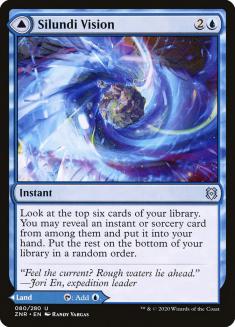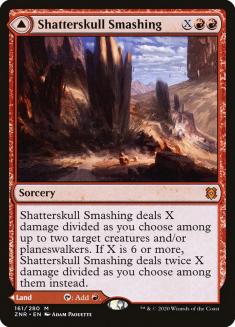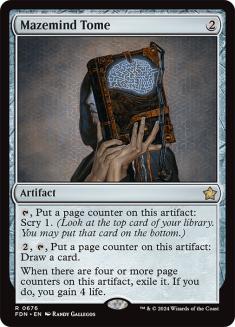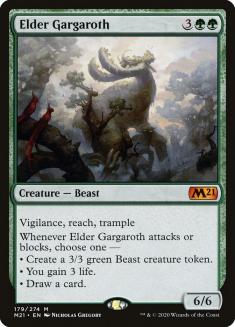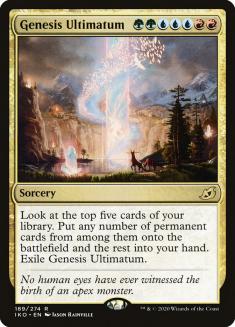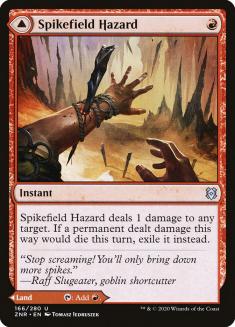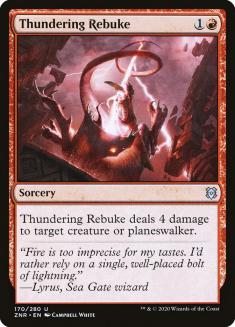Five days.
It took Wizards of the Coast (WotC) five days to take action against Omnath, Locus of Creation.
In the information age, metagames move quickly and articles typically have a short shelf life. Unfortunately, this is probably the shortest in my career. Don’t hit that back button quite yet though. You still have a weekend to hit Mythic on Magic Arena or do well in the SCG Tour Online Championship Qualifier and Seasonal Championship events this weekend with (what I can only assume is) one of the most dominant decks of all time.
Once Zendikar Rising dropped on Arena, I spent the vast majority of my time working on various Omnath decks. At first, I tried other things but they didn’t feel quite right. Omnath was the best thing and others caught on quickly.
There are two versions. One plays a fair midrange game that has the option of combo killing their opponents with Terror of the Peaks or Kenrith, the Returned King, and the other fully leans into the combo nature of triggering landfall multiple times per turn.
Which win condition is strongest? Given the prevalence of the mirror match, the answer isn’t close.
Here’s how it works:
Lotus Cobra generates mana with each land that enters the battlefield and Escape to the Wilds; Dryad of the Ilysian Grove; Azusa, Lost but Seeking; and Uro, Titan of Nature’s Wrath generate extra land drops. That mana leads to Escape to the Wilds and Genesis Ultimatum, which puts more lands onto the battlefield, generating more mana. This ultimately leads to you being able to draw your entire deck. At that point, Thassa’s Oracle is the perfect win condition.
You can “fizzle” on your combo turns if you aren’t able to chain draw spells together but there are ways to mitigate that, plus fizzling means you probably means you have twenty permanents on the battlefield, a lot of power, a lot of life, and even more mana to use on your next turn.
Mirror matches are kind of a mess. Both players are doing ridiculous things each turn, which leads to the games being incredibly swingy. It’s difficult to get a foothold without winning the game outright. That’s why I lean on Thassa’s Oracle instead of trying to win via damage. Killing anyone with 40 life is challenging, no matter what deck you’re playing, so I sidestep that entirely.
Creatures (19)
- 4 Lotus Cobra
- 4 Uro, Titan of Nature's Wrath
- 1 Thassa's Oracle
- 4 Dryad of the Ilysian Grove
- 4 Omnath, Locus of Creation
- 2 Glasspool Mimic
Lands (22)
Spells (19)
- 4 Escape to the Wilds
- 4 Genesis Ultimatum
- 3 Bala Ged Recovery
- 4 Spikefield Hazard
- 3 Shatterskull Smashing
- 1 Silundi Vision
Sideboard

The Maindeck
If you have to resolve an Escape to the Wilds or Genesis Ultimatum in order to win, there’s virtually no reason to try to win with damage. I’d rather have more ways to facilitate casting the payoffs and fewer threats like Felidar Retreat or Kenrith, the Returned King.
Sequencing is difficult if you’re new to this sort of thing but practice goes a long way. Especially on the big turns, there are lots of micro-decisions. Should I Mimic this Cobra to lose mana now and hopefully make it up later? When is the correct time to weave a second Omnath into the mix?
Play some games, get the hang of it, and try to make actions quickly on Arena. Some of my attempts to purely optimize have led to timing out and losing my turn before I could win.
This deck wouldn’t exist without Lotus Cobra. On your big turns, a single Cobra can easily generate more than ten mana. It leads to your strongest openings but you should fully expect it to die. People are scared and they are ready.
Since it’s likely to die and this deck lacks early plays, I wouldn’t mulligan aggressively. In general, a hand with enough lands and an Uro or Dryad will be enough, especially if you’re on the play.
If we don’t count the obvious best cards, then Escape to the Wilds is the best card in the deck. Honestly, we’ve probably been sleeping on this card because the previously legal options were so much stronger. However, once Fires of Invention, Agent of Treachery, Wilderness Reclamation, and the like are gone, we see Escape to the Wilds’s true power.
Turn 3 Dryad into Turn 4 Escape to the Wilds gives you seven lands on the battlefield and a lot of action, leaving you poised to go off on Turn 5. If your Turn 2 Lotus Cobra lived, you will probably win the game on Turn 4. You could even cast Omanth before your Escape to the Wilds if you had one.
The ceiling for the deck is unbelievably high, yet the floor still seems stronger than what everyone else is doing. Escape to the Wilds is a huge part of that. It’s the bridge into the bigger plays, the card advantage, and the mana acceleration.
Similarly to Escape to the Wilds, Omnath is an excellent bridge. Additionally, it provides lifegain, a potential mana boost, and can function as a win condition.
During your big turns, you can use Omnath’s mana generation to effectively make each subsequent Omnath free to cast. Any turn you untap with Omnath means you probably have access to Genesis Ultimatum, which means your opponent has to kill it on sight. Alongside Lotus Cobra, it’s too much pressure for your opponents to deal with.
Trying to beat a ramp deck that incidentally gains twenty life over the course of a game isn’t easy. Omnath is a huge part of that problem, although Uro obviously contributes as well. I’ve played fewer copies of Uro, sideboard them out a nonzero amount, and am very confident the deck could exist without them. However, Omnath is too much.
It blocks, accelerates you, and even makes your basic Plains able to cast Genesis Ultimatum. The only danger is that it does all that without providing you additional resources, similarly to Arboreal Grazer. You can only play cards like that in decks where ramping is all that matters and this is just such a case.
There are definitely games where your important cards get dealt with and you’re left with some 2/4s but at least your topdecking power is high. Obviously there are risks associated with playing a version that utilizes synergy rather than power but the synergy is stronger strategically. You have to take the bad with the good.
Glasspool Mimic was a great suggestion from Bryan Gottlieb. It allows you to copy things like Lotus Cobra or Dryad of the Ilysian Grove during your combo turns, allowing you to continue generating mana. You can even copy Omath to generate an extra mana.
Other than that, it’s mostly useless as a utility card. You can preemptively copy a Lotus Cobra if you want to set up for a subsequent turn but most of the time it will be a land or cast during your big turn. That might not seem worth playing but the deck wants blue mana for Ultimatum and it contributes to winning outright on those big turns.
The main downside to this version of the deck is that it requires you to resolve Escape to the Wilds or Genesis Ultimatum, usually multiple times. In the face of disruption, that can be difficult. When you’re leaning on cards like Dryad of the Ilysian Grove to accelerate you, running out of gas is common without big card advantage spells.
I’ve also played games where I only saw a single Escape to the Wilds or Genesis Ultimatum in the top half of my deck. It’s unlucky and unlikely but we can mitigate the issue by playing Bala Ged Recovery. On the bright side, there are plenty of decks that lose to an Omnath, Uro, or Elder Gargaroth, so it’s less of an issue in some matchups.
This is a new addition and one that’s probably a stretch. It digs deep but doesn’t have many targets, so casting it isn’t something you want to do except in dire circumstances. At that point, you probably have mana and no action, which is the problem it’s trying to solve. Bala Ged Recovery is only good if you’ve drawn an action spell, so I’m splitting them to get a similar but different effect.
In sideboard games, Silundi Vision can be quite good since you’ll have more relevant targets. If you want to cut it, I’d understand, but the theory makes sense.
Even in the midrange versions, people should be playing this card. It’s one of the best ways to come back from behind and not enough people are giving it the respect it deserves. You get a land if you want it (and this deck usually does) and have an out to bad situations, all at a low opportunity cost. Not every game goes according to plan, especially as players add relevant pieces of interaction to their decks. Sometimes you need a way to catch back up.
The Sideboard
My sideboard is straightforward because our problems are straightforward. Aggro, control, and the mirror are the things that could be patched up, although not in that order. Thankfully, Temur has all the answers.
Initially, I wasn’t sure what the best counterspell would be, but mirrors made it very clear that Mystical Dispute was where you wanted to be. Being able to tag two of the most important cards in Omnath and Genesis Ultimatum, especially on the cheap, is huge.
It can go dead quickly, so use it before that happens. However, there could also be situations where you need it to defend against something specific or force your spell through their own Dispute. If you have two copies, I’ll happily use one on an Uro to slow them down.
Negate would be stronger against non-blue disruption but that doesn’t seem to be the way people are leaning. Dispute is more valuable and more relevant, although I did want a fifth counterspell for control, so I have a single Negate.
Control decks can’t stop you from ramping because you have too much of it. If they focus on countering or killing your threats, they can easily run you out of gas if you can’t resolve Escape to the Wilds or Genesis Ultimatum. The best gameplan I’ve found is one where you develop your mana, generate more resources from Mazemind Tome, and eventually win a counter war over a big spell.
Ideally, there would be something more mana-efficient to provide a burst of cards. I tried Jace, Mirror Mage, which was also solid but just as slow. It was also vulnerable to getting attacked by Shark tokens.
Somehow, there are still decks that are completely unprepared for this card. I’ve had red decks completely load up on Thundering Rebuke to kill Omnath but maybe they’re supposed to play an Act of Treason variant or something that pushes through blockers.
I tried Storm’s Wrath but there are too many cards that make sweepers less than ideal. Bonecrusher Giant, on the other hand, is always good against aggro and also helps you win those fair games. It’s also a cheap removal spell against opposing Lotus Cobras if you want to play that game.
Thundering Rebuke could be Redcap Melee, which is what I had initially. Bonecrusher Giant is more impactful at stopping aggression than a single removal spell and Thundering Rebuke kills Omnath and Lotus Cobra. It’s a hedge.
Sideboarding Guide
VS Control
Out:
In:
The strategies for Dimir, Azorius, and Sultai are all pretty much the same.
I assumed the threat-dense version would be stronger against control but there’s not much you can do against them to get ahead. The one-for-one answers are very strong and you typically only win the game if you get ahead by resolving an Escape or Ultimatum. The same is true for my deck, except you typically win the game outright. There have been games where I’ve been decked after they deal with all my threats and that’s not acceptable.
VS Aggro
Out:
In:
Things vary depending on what sort of aggro deck you’re up against but this is a fine baseline to follow. Against something like Orzhov, you can expect them to have some disruption and spot removal, so you’ll need to play a grindier game. Regardless, these are the sorts of decks you’ll never need Thassa’s Oracle against.
I like keeping in a single Genesis Ultimatum, especially on the play, because drawing one is rarely bad. It gives you an out to bad positions which no other card can provide. Drawing multiples is very, very bad and the easiest way to lose. You have to spend much of the early-game playing catch-up instead of accelerating anyway.
Overall, aggro decks can have scary starts, but you have so much lifegain and toughness that it usually doesn’t matter. Flying is the scariest ability but those decks are easy enough to race.
VS Four-Color Ramp
Out:
In:
If you’re on the draw, you’ll want to bring in some removal spells. I’ve been happy with two Bonecrusher Giants and a Thundering Rebuke, since those give you some interaction against Lotus Cobra and Omnath, which you’ll need when you’re behind.
The mirrors are often about who does their broken thing quicker, so Uro is mostly irrelevant. Some players might load up on interaction, which makes the games grindier, so Uro can be solid there. Your sideboarding strategy should depend on what your opponent brings to the table.
Tick Tock
I fully expect this deck to not exist in the same fashion a week from now. Regardless, the information gained from building these decks and learning the interactions is important. Plus, there’s still the weekend to crush people with what is one of the best Standard decks I’ve played in a very long time.

